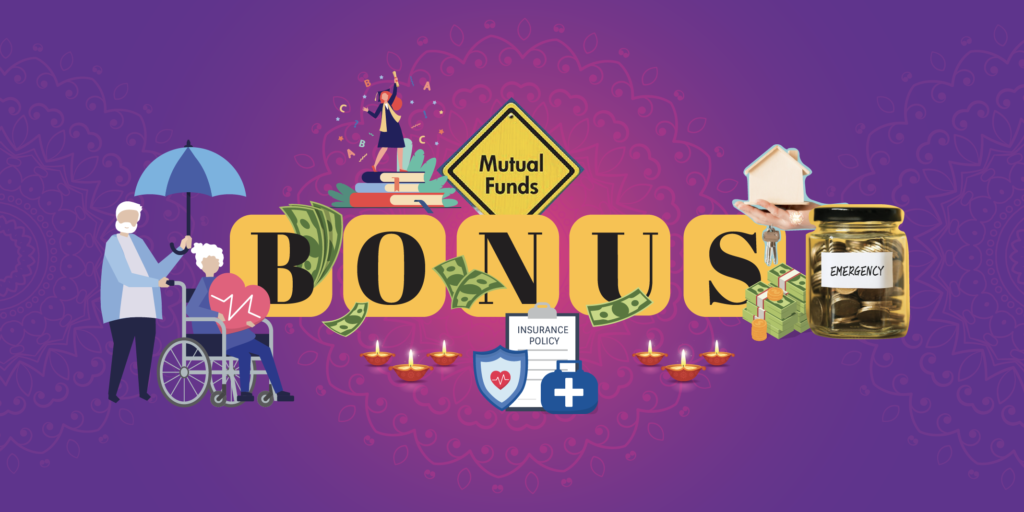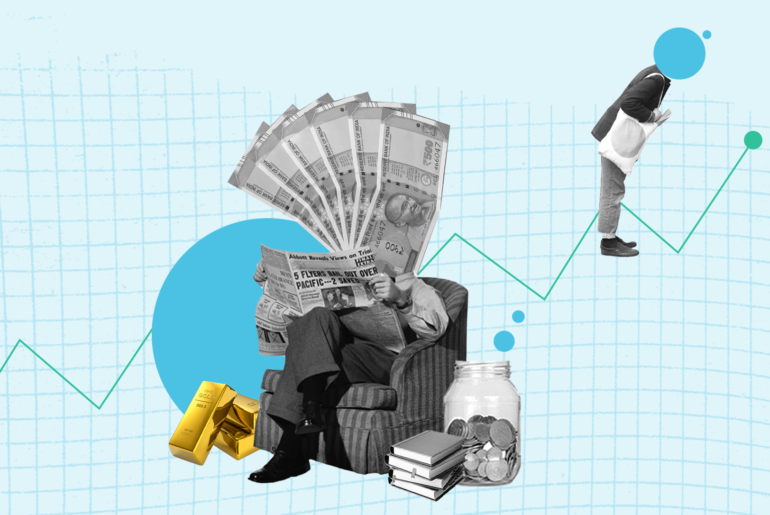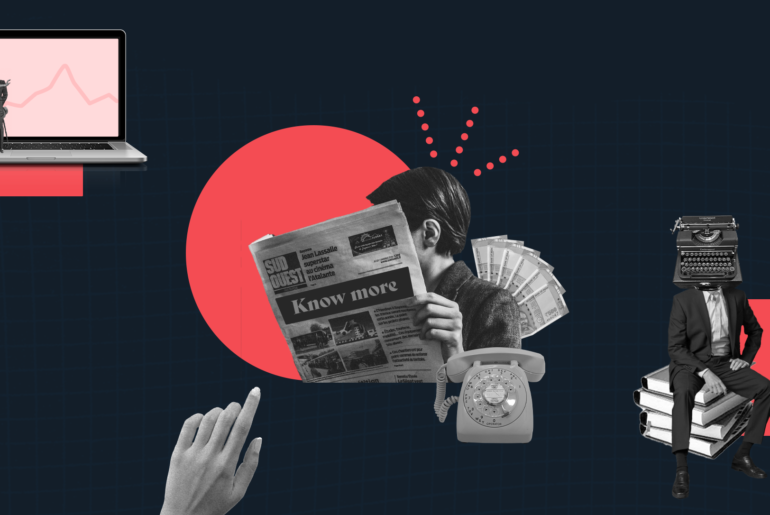Last Updated on Oct 28, 2021 by Aradhana Gotur
Hey peeps, we hope you had an amazing Dasara and are eager to prepare for Diwali. And so we thought, why not talk money and understand its basics? Especially because Diwali is the time for gifts in cash, kind, and bonus. And we like to spend money on something to amuse ourselves: maybe buy an appliance or a shiny Diwali attire. While these make you happy, there’s something else that can make you happier—saving.
We hate to say it but then we tell you the truth so you can make something of it. Don’t be content with saving alone because there’s something even better that can enhance your financial security, ‘investing’. It means to park your funds in a scheme or buy financial assets with an expectation to grow it/earn returns.
Table of Contents
The time and money concept
You must know the money concept—how it loses value over time. Yes, we are talking about the time value of money. This concept never grows old as it is forever relevant. In non-technical terms, it means that money’s worth today is less than what it was yesterday and will be more than what it would be tomorrow. The reason: money compounds, it has the potential to grow. This means money has two values: present and future. More on this later in the article.
Saving vs investment
Money has time value, that’s all you need to know to get started. Given an option of receiving Rs 20,000 today or 3 yrs later, what would you choose? The first option, right? But once you receive the money, would you save it or spend it? We would like to assume ‘save it’.
Because when you save money, you simply keep it aside. But when you invest it, you allow your money to earn interest and grow it manifold.
The time value of money: it grows but not on trees
Stories are amazing ways to learn lessons, aren’t they? So let’s read one, shall we? 3 yrs ago, Ankit, a smart teenager, had received Rs 1,500 on his 15th Diwali. Ankit had many ways to spend his money. One way was to buy a gearless cycle, which cost around the same amount. But Ankit didn’t have to do that because his father gifted him a cycle.
Ankit’s mother, who is smarter, suggested he hand over the money to her so she could invest it in an FD. But Ankit was a proud teenager and wanted to prove that he could manage his cash-gift well, without spending it unnecessarily. Because Ankit knew that saving money is important. So, he kept it in his safe very safely. That’s a good move or is it not? Kind of yes.
3 yrs later, when his cycle broke down, Ankit sold it in scrap and received Rs 200 (for a Rs 1,500 cycle) in return. Now, Ankit had to buy a new cycle. Fortunately, he had saved up Rs 1,500 and so he thought he could easily buy a new one without his parents pitching in. And with Rs 200 more, Ankit thought he could buy a better cycle. But little did he know that money loses value and it doesn’t grow in a safe. 3 yrs later, the price of a cycle started from Rs 2,000, which he couldn’t afford on his own.
Had Ankit readily handed over Rs 1,500 to his mother to invest in an FD, his money would have grown in value today. Even if the fixed deposit had offered 7% p.a., Ankit’s money would have grown from Rs 1,500 to ~Rs 1,850 today. After adding Rs 200 from scrap to the FD maturity amount, Ankit would have had Rs 2,050.
So what’s the big deal?
The big deal is when big money is involved. How we define big is subjective though. What we saw here is a small amount of Rs 1,500 that didn’t grow, instead, it lost its original value too. We call it original value because money’s worth is determined based on what it can buy. Things assign value to money—but there are other factors such as inflation that also come into play.
Anyway, simply imagine if you kept lakhs of rupees in a safe at home and so they lost value. Hurts, right? That’s why investing is a big deal.
3 Key points about investment
After all, it is safe to say that SAVING DOESN’T EQUAL OR BEAT INVESTMENTS. But there are 3 things you need to know about investments before getting started.
1. First things first, nothing comes without risk, not even investments. Risk and returns are inherent to investments. In fact, these go hand-in-hand: higher the risk, higher the potential returns. For instance, look at FD and stocks. While an FD is a low-risk and fixed-income avenue that generates guaranteed/stable returns, stocks are high-risk investments that have the potential to reap higher returns as well. But risk is not just one type, there are several types of risks such as reinvestment risk, liquidity risk and so on, which you can mitigate by way of diversification.
2. Invest in line with your goals. Everyone has goals and dreams. They can be as important, mainstream, and mundane as buying a geared cycle, saving for an emergency or accumulating capital for your business. Or they can be a notch higher: going on a world tour or buying a Limo. Regardless, goals and dreams demand money, without which they can go down the drain. That would be a sorry picture to look at.
You see, investing without an objective is like driving without a direction. You start the journey but are not sure where you are heading and which roads you are taking. You don’t even know how much fuel you’ll require to get to wherever it is that you want to go. So, would you rather go in circles? Of course, not. That’s why you need to have a plan in place.
Start by setting goals. Do you want to save up for your home loan down payment, to revamp your familial café into a bar or to accumulate enough wealth by 40 so you don’t have to toil until 60? Once you know the purpose of investing, determine how long you have to accumulate the desired amount. Then consider both these points and determine how much you need to invest each year so you have the desired amount to reach your goal. That’s how you start at point A and reach point B.
3. Start investing early. We are reiterating the most basic yet crucial fundamentals of money. One, money has time value. Two, money compounds with time. So if you ask why invest today and not after a few years, it’s because the sooner you invest, the more time your money gets to grow. Here’s an example.
| Investment option | Amount invested (Rs) | Returns (%) | Investment period (yrs) | Maturity amount (Rs) |
| 1 | 25,000 | 7% | 3 | 30,712 |
| 2 | 25,000 | 7% | 5 | 35,228 |
If you have to accumulate Rs 35,000 by 2026, would you rather invest now or do it after 2 yrs? From the above table, it is easy to understand that you would make more money on investing it for a longer period than a shorter one. The earlier you start investing, the more time you give your money to grow.
In case you want to calculate the time value of money, you can use the following formulae:
- FV = PVx(1+r)^n
- PV = FV/(1+r)^n
Here,
FV = Future Value of money
PV = Present Value of money
r = Rate of interest
n = Number of compounding periods (number of times interest is calculated in a year)
So does it mean you put away all your savings in investments?
Well, no. That would be a foolish thing to do. Some investments have a lock-in period. For instance, ELSS has a 3-yr lock-in period before which you can’t withdraw your funds. But what if an emergency knocks at your door? You can’t send it back, right? Ergo, you should always have liquid cash around: in a safe, under the mattress or inside a container. We are kidding. Ideally, you should have some money parked in a savings account or any other scheme that is liquid. Such an arrangement to access money kept aside for unaccounted expenses is called contingency/emergency fund.
Well, folks, that’s all for today. We hope to have given not one or two but several good-enough reasons to choose investment over saving. Remember, your money is your responsibility and it will only grow in value if you invest it.
Nothing comes easy and without risk, not even money!
So invest your money to glory and give your money the potential to grow
- List of High Beta Stocks in India: Volatile Shares on NSE - Apr 11, 2025
- Top Large Cap Funds 2025: Discover Blue Chip Performers - Mar 27, 2025
- Gilt Funds in India: Features, Meaning, and Advantages - Mar 13, 2025





